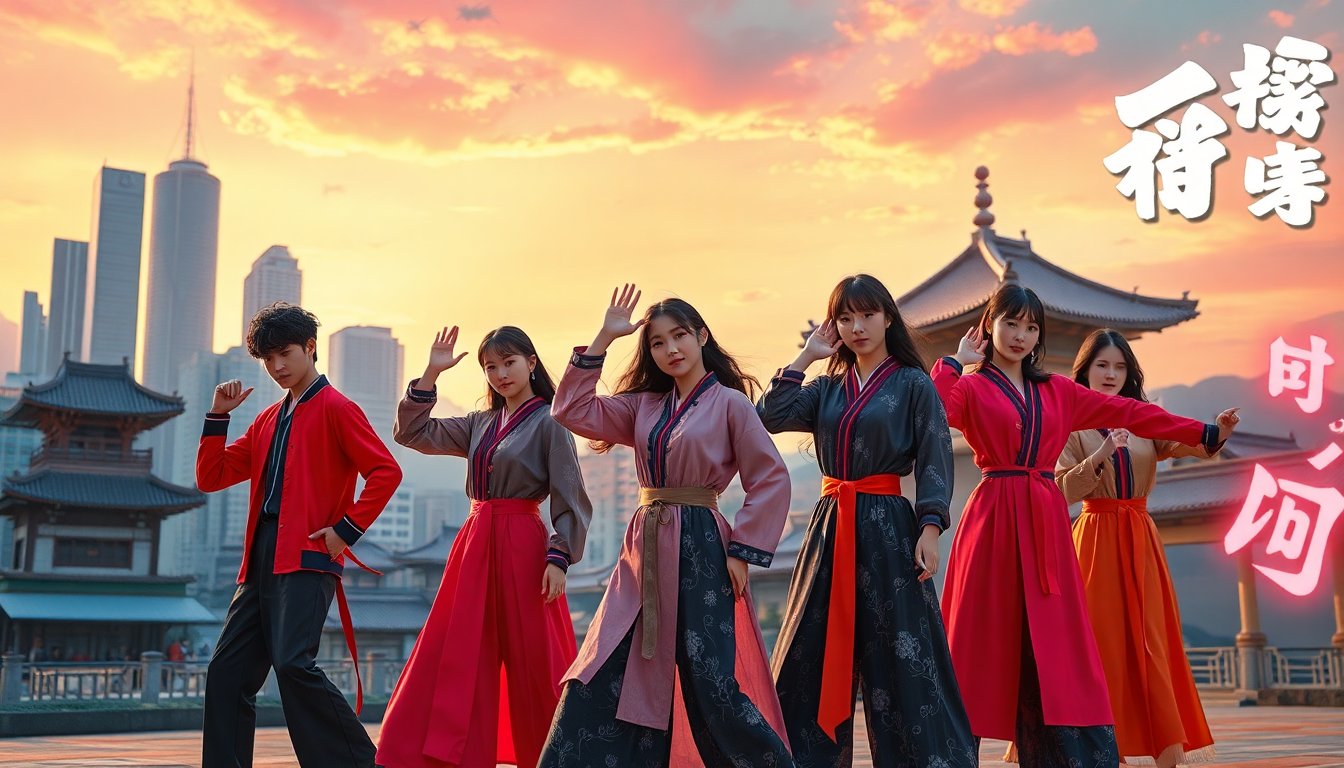Table of Contents
When Maggie Kang was offered the opportunity to direct her own animated feature, she identified a notable gap in Hollywood’s productions. Despite having a decade of experience in animation, the Korean-American director had not encountered a project that genuinely reflected her cultural background. This realization led to the creation of K-Pop Demon Hunters, a Netflix original that features an entirely Korean cast and has rapidly gained global popularity.
During her masterclass at the Netflix Creative Asia conference at the Busan International Film Festival, Kang detailed the extensive journey that contributed to her film’s success. She emphasized how she thoughtfully incorporated aspects of Korean culture into the supernatural narrative, which centers around a dynamic girl group.
From Inspiration to Creation
Kang’s deep-rooted passion for Korean mythology significantly influenced the film’s development. From a young age, she was captivated by stories of supernatural beings such as dokkaebi, dalsin, and saja. “The idea of incorporating demons naturally led to the creation of a powerful team of women dedicated to confronting these entities,” she stated. Nonetheless, she recognized that the initial concept needed more depth.
A Fusion of K-Pop and Mythology
The introduction of K-pop into the storyline proved to be a transformative factor that enhanced the project. Kang emphasized, “Integrating K-Pop turned the film into a dynamic musical, significantly increasing its scale and visual impact.” The widespread appeal of K-Pop made it an ideal component, enabling the narrative to connect with a diverse audience.
To enhance the film’s authenticity, director Kang drew inspiration from the rich tapestry of Korean shamanic practices. “Korean shamanism includes the role of the mudang, who use music and song to repel malevolent spirits. This was a crucial aspect of our narrative,” she stated.
In the film, the demon hunters harness their powers through rhythm and melody, employing sonic weapons against their adversaries. Kang highlighted traditional Korean folk dancers, whose performances historically served as rituals to protect their communities from evil. “In many ways, these dancers were among the first concert performers in Korea,” she noted.
Immersing in Korean Culture
In 2022, director Kang and her creative team, including co-director Chris Appelhans, undertook a significant research journey across Korea. Their itinerary featured notable locations such as Gwangjang Market, Namsan Tower, and various traditional village settings.
Kang highlighted the necessity of experiencing Korea in person to authentically capture its essence. This immersive research deeply influenced every visual detail in the film, ensuring that even the iconic Seoul skyline was accurately represented in the animation.
Symbolism in Character Design
A particularly notable scene takes place in Bukchon Hanok Village, which was selected for the initial meeting between the lead characters, Rumi and Jinyu. Kang elaborated, “The juxtaposition of the traditional Hanok architecture with the modern skyline symbolizes the characters’ blend of heritage and contemporary life.”
Attention to detail played a crucial role in the film’s production. Cultural consultants provided vital insights, such as the inclusion of napkins under place settings in restaurant scenes, which resonated strongly with Korean audiences.
A Celebration of Female Empowerment
Creating strong female characters was essential for director Kang, who aimed to portray them as both aspirational and distinctly Korean. She expressed admiration for her character, Mira, stating, “Mira embodies a beauty that is distinct and inspiring, and I wish I could be like her.”
The film features a vibrant soundtrack with original songs created by prominent K-Pop producers, including collaborators from The Black Label. “We worked with K-Pop hitmakers to ensure that the music authentically reflects the genre’s essence,” Kang explained.
Chart-Topping Success and Creative Collaborations
The standout track “Golden” has achieved remarkable success, reaching the top of the Billboard charts. Meanwhile, the popular K-Pop group Twice covered another song from the film, demonstrating the film’s wide appeal. “Their enthusiasm validated our efforts in the K-Pop realm,” stated Kang.
Kang expressed strong appreciation for her collaboration with Appelhans, highlighting the importance of their joint creative process. “The narrative is paramount. Without a solid story, nothing else matters,” she explained, detailing how they exchanged feedback and ideas throughout the production.
The Unexpected Success and Future Possibilities
The film’s overwhelming global reception surprised its creators. Reflecting on the experience, Kang remarked, “When creating a film, you hope it resonates, but we genuinely did not anticipate this level of success. It has been mind-blowing.”
K-Pop Demon Hunters: A Landmark for Korean Representation in Animation
Despite growing interest from audiences regarding potential sequels, director Kang has stated there are currently no plans in place. However, she remains open to the possibility of exploring more stories in the future.
The success of K-Pop Demon Hunters represents a significant achievement for Korean representation in the animation industry. “Each time someone watches our film on Netflix, they are not merely viewing a story; they are also engaging with Korean culture in a meaningful way,” Kang emphasized.


